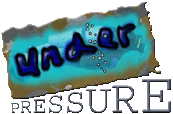Biology Project Inbox
Dear Dr. Piantadosi, I am a High School student at Cary Academy in Cary, North Carolina. I am working on a biology project on the medical effects of scuba diving related to the change in pressure experienced during a dive. I am interested in learning more about what is involved in treating people with decompression sickness and other overexpansion injuries with the use of a decompression chamber. Would you mind answering the questions below? Thanks, John Peebles
Questions:
- What precludes treatment of an overexpansion injury in a recompression chamber?
- What is the most severe overexpansion injury that you have witnessed in your work?
- Does any Organization other than Duke provide funding for the chamber and the research projects conducted using it?
- What are your responsibilities as the center director of the Duke Center for Hyperbaric Medicine and Environmental Physiology?
- What is the general layout of the recompression chamber and the room that it is in?
- What is the maximum theoretical depth that the recompression chamber can obtain?
- Have any of the doctors working inside the recompression chamber ever gotten DCS because of their work in the chamber?
- How does getting DCS once affect your chances of getting it again?
Hi John, You are welcome to visit; just call our Manager Owen Doar at 919-684-6726 and he can arrange a tour for you and your class if you want. The questions you asked are answered below. There is also information on our web site about the Center and at the DAN web site. Good luck with your project, You may already have this since you got my name, but just in case it is: http://hyperbaric.mc.duke.edu/ You may know about DAN too, the web site is http://www.diversalertnetwork.org/ The national medical society web site is http://www.uhms.org/
- 1. What precludes treatment of an overexpansion injury in a recompression chamber?
- By over-expansion, I presume you are speaking of arterial gas embolism or AGE. This means that expanding air has entered the circulation from the outside of the lung, and this condition needs immediate treatment by recompression with oxygen in a chamber. If the air remains in the lung or between the lung and inner chest wall (called pneumothorax) then it is not treated in a chamber- we watch or put in a small chest tube to evacuate the air.
- 2. What is the most severe overexpansion injury that you have witnessed in your work?
- Cerebral air embolism resulting in death- multiple cases.
- 3. Does any Organization other than Duke provide funding for the chamber and the research projects conducted using it?
- Please visit the national web site for chambers that do research. We usually have outside funding for our research from NIH, the US Navy, the Air Force and NASA. DAN gives us a small amount of money too.
- 4. What are your responsibilities as the center director of the Duke Center for Hyperbaric Medicine and Environmental Physiology?
- I am responsible for the overall administration, supervision and appropriate use of the facility and oversee the clinical, research and teaching programs. In other words, the buck stops on my desk. We have a manager, who supervises the technicians and upkeep, a Medical Director, Dr. Richard Moon, and a Research Director, Dr. Dick Vann, who comprise our management team.
- 5. What is the general layout of the recompression chamber and the room that it is in?
- We actually have a complex of 8 chambers, interconnected- it is shown on our web site.
- 6. What is the maximum theoretical depth that the recompression chamber can obtain?
- The chambers all have a rating for depth that varies with age, type of steel and number of cycles the stell has already undergone. We also have a required theorectical safety factor of 2. So our chmaber go to depths between 300 feet and 3,600 feet of seawater. We also have an altitude capability of 75,000 feet, which is high enough to require a full pressure suit.
- 7. Have any of the doctors working inside the recompression chamber ever gotten DCS because of their work in the chamber?
- All of us and some of the nurses too, but only on experiments, not for routine patient care.
- 8. How does getting DCS once affect your chances of getting it again?
- It depends on the type of DCS and location. Some severe types (spinal cord) will disqualify one from diving permanently. Milder forms are essentially cured by recompression. Some individuals do seem to be unusually susceptible and we are trying to understand why. Also, there are about 1000 cases of DCS per year reported to DAN in the US every year from recreational SCUBA diving and 70 to 90 deaths.
